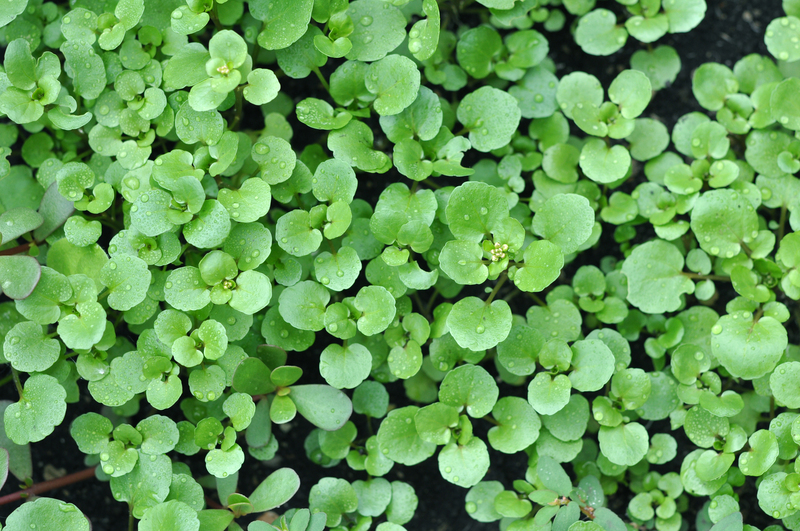Sow Sustainability: Gardens as Climate Protectors
Posted on 19/09/2025
Sow Sustainability: Gardens as Climate Protectors
In a world increasingly threatened by climate change, sustainability and environmental responsibility have taken center stage. Gardeners, whether urban apartment dwellers or suburban homeowners, can wield their gardens not just as idyllic retreats but as powerful tools for climate protection. This article explores how sowing sustainability in our gardens can profoundly impact the planet, acting as living climate protectors and showcasing actionable steps everyone can follow.
Introduction
Sustainability has moved from a buzzword to an urgent call for action. According to the United Nations Environment Programme, global temperatures are rising, biodiversity is declining, and extreme weather events are more prevalent than ever. How can gardens, humble and small as they might seem, contribute meaningfully to the fight against climate change? The answer lies in understanding gardens as climate protectors--living, breathing ecosystems that can mitigate carbon emissions, foster biodiversity, improve soil health, and inspire communities to think and act green.

The Science Behind Gardens as Climate Protectors
The Role of Photosynthesis in Carbon Sequestration
Plants are at the frontline of climate defense thanks to their remarkable ability to sequester carbon. Through photosynthesis, plants absorb carbon dioxide (CO2) from the atmosphere and store it in their leaves, stems, and roots. This natural system helps lower greenhouse gases, crucial in slowing global warming. Every garden, regardless of its size, forms part of this worldwide carbon sink network.
- Trees and shrubs are especially efficient, storing more carbon over their lifetimes than annual plants.
- Compost-rich soils support carbon capture further by locking organic matter below ground.
- Native grasses and perennial beds maintain root systems that continuously sequester carbon.
Gardens Boost Biodiversity
Biodiversity is vital for resilient ecosystems. Gardens that prioritize diverse plant species--especially native varieties--provide food and habitat for pollinators, birds, and beneficial insects. Thriving, biodiverse gardens act as miniature wildlife refuges, increasing the environmental resilience needed to weather climate impacts.
Regenerative Gardening Methods
Sow sustainability by incorporating regenerative practices in the garden. These techniques do more than sustain--they restore and enhance ecological health:
- No-dig gardening: Minimizes soil disturbance, promoting healthy microbial life that locks in carbon.
- Cover cropping: Prevents soil erosion and adds organic matter, enriching soil fertility.
- Crop rotation and companion planting: Break pest cycles naturally and reduce the need for synthetic chemicals.
Benefits of Sustainable Gardens for the Climate
1. Carbon Footprint Reduction
Sustainable landscaping practices go beyond the mere aesthetic. By opting for manual tools over gas-powered equivalents, reducing fertilizer use, and utilizing rainwater harvesting, gardeners minimize their environmental impact.
- Composting garden waste reduces methane emissions from landfills.
- Local, organic gardening diminishes the need for food transportation, which is a major source of fossil fuel emissions.
- Mulching retains soil moisture and limits the frequency of irrigation, further conserving resources.
2. Flood Mitigation and Water Conservation
Urbanization causes impervious surfaces to dominate, leading to destructive runoff and flooding. By contrast, gardens act as sponges, absorbing rainwater, reducing runoff, and recharging groundwater. Techniques like:
- Rain gardens: Planted depressions collect and filter rainwater from roofs, driveways, and streets.
- Permeable paths: Allow water to soak into the ground, preventing erosion.
- Native plantings: Well-adapted species require less irrigation and tolerate drought, saving water in the long run.
3. Urban Cooling and Air Quality Improvement
Cities are notoriously hotter than rural surroundings--a phenomenon called the "heat island effect." Gardens with trees, shrubs, and even vertical plantings lower local temperatures. This not only makes urban areas more comfortable but also reduces the energy required for air conditioning, indirectly shrinking carbon emissions.
Plants also filter pollutants from the air, contribute to cleaner oxygen levels, and dampen noise--a crucial benefit for densely populated, polluted urban zones.
How to Sow Sustainability: Garden Strategies for Climate Protection
1. Choose Climate-Appropriate, Native Plants
Native plants are already adapted to local climate, requiring fewer resources, less water, and minimal intervention. They are resilient to pests and diseases, and their deep-root systems support soil structure and carbon capture.
- Research local flora and select varieties proven to perform well under existing weather patterns.
- Limit invasive exotics that can outcompete beneficial natives and disrupt ecosystems.
- Consider planting trees and shrubs for year-round habitat and carbon storage.
2. Use Sustainable Gardening Materials
Opt for eco-friendly materials from garden beds to pathways:
- Recycled wood, stone, or composite beds reduce deforestation and waste.
- Natural mulches or living ground covers prevent soil erosion and sequester carbon.
- Rain barrels and sustainable irrigation systems conserve precious water.
3. Prioritize Organic and Regenerative Practices
Conventional fertilizers and pesticides damage soil life and leach into waterways. Instead:
- Make and use your own compost to enrich garden beds and reduce landfill waste.
- Practice companion planting and crop rotation for natural pest suppression and soil health.
- Reduce or eliminate artificial lawn areas, which consume water and fossil fuels for maintenance.
4. Support Wildlife and Biodiversity
Encourage pollinators, birds, and helpful insects by:
- Leaving patches of wildflowers or meadow areas uncut.
- Building insect hotels or birdhouses.
- Planting continuous blooms throughout the seasons.
- Eliminating pesticides that harm beneficial creatures.
Innovative Climate-Protecting Garden Ideas
Permaculture Gardens
Permaculture designs mimic natural ecosystems to maximize sustainability. From food forests to integrated water management, permaculture gardens require less energy and continuously build soil health--a win for the climate and the gardener.
Edible Landscapes
Transforming ornamental beds into edible gardens reduces food miles and provides ultra-fresh produce. A well-planned edible landscape uses multi-layer planting (trees, shrubs, herbs, and groundcovers) to optimize biodiversity and carbon sequestration.
Community Gardens as Green Hubs
Community gardens transform vacant lots or underused spaces into shared green refuges. They not only provide food security but also educate and unite neighbors. Community gardens collectively capture carbon, mitigate heat, and provide wildlife corridors, multiplying climate benefits at the neighborhood scale.
Gardening for Resilience: Preparing for a Changing Climate
Climate change is already impacting our gardens--new pests, extreme weather, and unpredictable seasons. Proactive, climate-smart gardens can adapt and thrive despite these challenges:
- Diverse plantings ensure that if one species succumbs to disease or weather, others will fill the gap.
- Water-resilient landscaping, such as using mulch, rain gardens, and drought-tolerant plants, buffers the impact of droughts and storms.
- Frequent soil tests help gardeners adjust organic amendments, building lasting fertility and disease resistance.
Sowing sustainability now means our landscapes will be more resilient and productive as weather patterns shift.
The Social Impact: Gardens Growing Community and Awareness
Environmental Education and Stewardship
Gardens serve as open-air classrooms. From school programs to neighborhood projects, involving children and adults alike in sustainable gardening teaches stewardship and responsibility for the natural world. These living lessons spread environmental awareness and empower individuals to make greener choices beyond the garden fence.
Well-Being and Mental Health
Sustainable gardens offer more than climate protection--they nurture mental and emotional health. Spending time among plants, breathing fresh air, and watching wildlife improves mood, reduces stress, and deepens our connection to the earth, fostering an ethic of protection and care for our planet.
Overcoming Obstacles: Common Barriers to Sustainable Gardening
Despite the clear benefits, many people encounter obstacles in sowing sustainability in their gardens:
- Limited access to land or sunlight.
- Lack of gardening knowledge or initial materials.
- Neighborhood ordinances or homeowner association restrictions.
- Concerns about costs.
Solutions include vertical gardening, joining community garden projects, advocating for greener local policies, and leveraging online resources for sustainable gardening advice. Upcycling materials and seed sharing also reduce startup costs while fostering community.

Sow Sustainability: Taking Action in Your Garden
Ready to make your garden a climate hero? Here's a checklist to help you get started:
- Assess your site: Note sun, shade, moisture, and existing plant life.
- Plan for diversity: Aim for native and perennial-rich plantings.
- Implement water-wise strategies: Rain barrels, mulch, and drought-tolerant species.
- Start composting: Divert kitchen and garden waste from landfill.
- Reduce chemicals: Choose organic pest and soil remedies.
- Support wildlife: Provide shelter, food, and water for pollinators and birds.
Remember, even small steps--like swapping out a patch of lawn for native wildflowers--add up. Every garden counts in the movement to sow sustainability and protect our climate.
Conclusion: The Future is Green
In summary, gardens are much more than scenic spots or personal retreats--they are fundamental climate protectors in the face of environmental crisis. Through sustainable gardening, carbon sequestration, biodiversity enhancement, and water saving, anyone can transform their patch of earth into a force for good.
Sow sustainability in your garden and inspire others to join the movement. Together, we can nurture local landscapes that protect the global climate and build a thriving, resilient, and beautiful future for all.
Embrace your role as an earth steward--let your garden be your legacy for the planet.



